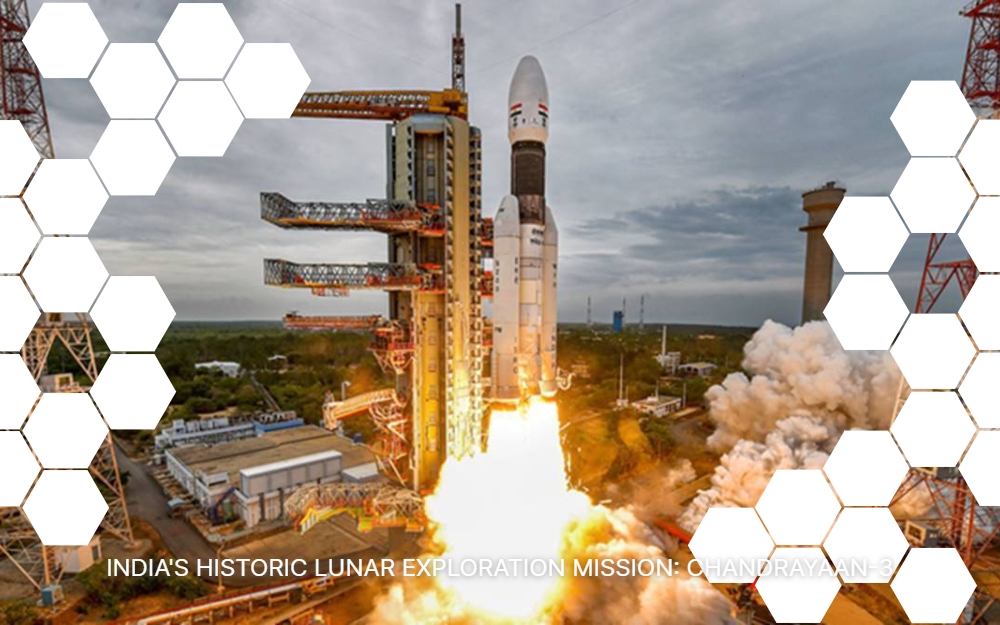India’s Historic Lunar Exploration Mission: Chandrayaan-3

Chandrayaan-3, India’s third lunar exploration mission, has commenced its momentous journey towards the moon. On July 14, the propulsion unit, robotic lander, and rover of Chandrayaan-3 were launched from India’s Satish Dhawan Space Centre. The mission aims to achieve a safe soft landing on the moon, scheduled for either August 23 or August 24. Success would position India as the fourth nation to successfully land a probe on the moon, following the Soviet Union, the United States, and China.
Objectives of Chandrayaan-3
The Indian Space Research Organisation (ISRO), the operator of Chandrayaan-3, has outlined three primary objectives for this mission. First, the mission aims to execute a secure soft landing near the lunar south pole. Second, it aims to deploy a rover and demonstrate its operational capabilities. Finally, the mission seeks to conduct in-situ scientific experiments over the course of a single lunar day, equivalent to approximately 14 Earth days. The estimated cost of the mission is around $77 million USD.
Phases of the Lunar Journey
ISRO has divided Chandrayaan-3’s approximately 40-day journey to the moon into three distinct phases. The first phase, known as the Earth-centric phase, involves the spacecraft departing from Earth. The second phase, the lunar transfer phase, involves the spacecraft manoeuvring towards the moon. Finally, the moon-centric phase begins as the spacecraft enters the moon’s sphere of influence and prepares for the landing.
The Complex Lunar Landing Process
Unlike spacecraft returning to Earth, lunar landings require a more intricate approach due to the moon’s wispy atmosphere. Chandrayaan-3 will perform an engine burn to establish a circular orbit around 62 miles (100 kilometres) above the lunar surface. Subsequently, the lander and rover will separate from the propulsion module. The lander will gently touch down in the moon’s south polar region, ensuring a speed of less than 5 mph (8 kph). The propulsion module will remain in lunar orbit to maintain communication with the lander and rover.
Improvements Since Chandrayaan-2
Following the lunar touchdown failure of the Chandrayaan-2 mission in September 2019, ISRO has implemented significant improvements for Chandrayaan-3. These enhancements include strengthening the lander’s legs, increasing landing-speed tolerance, and incorporating new sensors to measure approach speed. The mission has also incorporated the Chandrayaan-2 orbiter as a backup communications relay.
The Road Ahead
The anticipated landing window for Chandrayaan-3 is August 23 or August 24, aligning with the sunrise on the moon. This timeframe provides an optimal 14 to 15 days for operational activities. If landing cannot be achieved on these dates, the mission will wait for another month and aim for a September landing. Once a successful landing occurs, the Chandrayaan-3 rover will begin its exploratory tasks. Concurrently, a passive experiment called the LASER Retroreflector Array (LRA), contributed by NASA, will collect data to enhance understanding of the moon system’s dynamics.
India’s Chandrayaan-3 mission represents a significant stride in lunar exploration, with the potential to unveil valuable insights about the moon’s composition and characteristics.
Check out our website New Facts World and follow us on Instagram for more exciting tech news.



